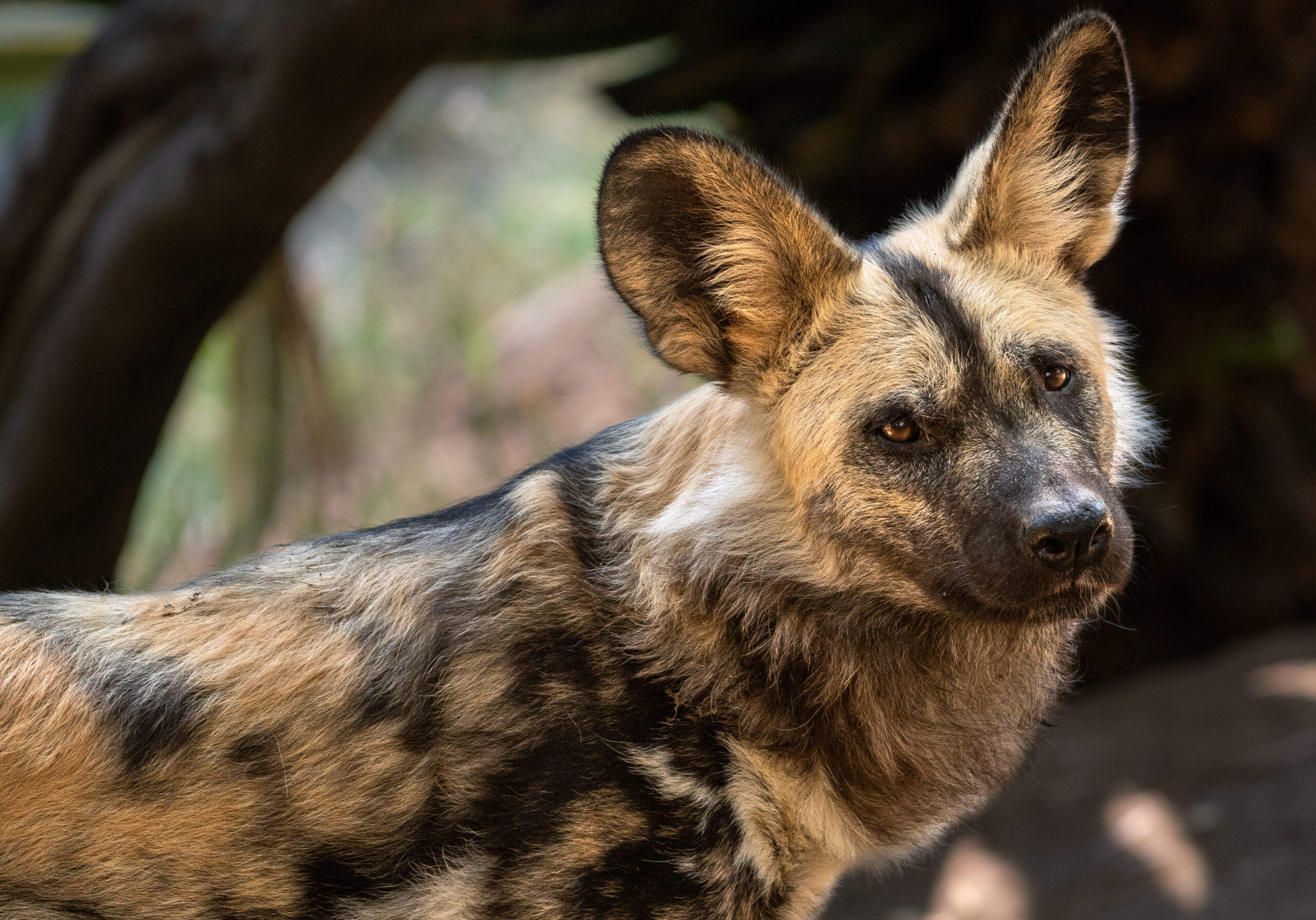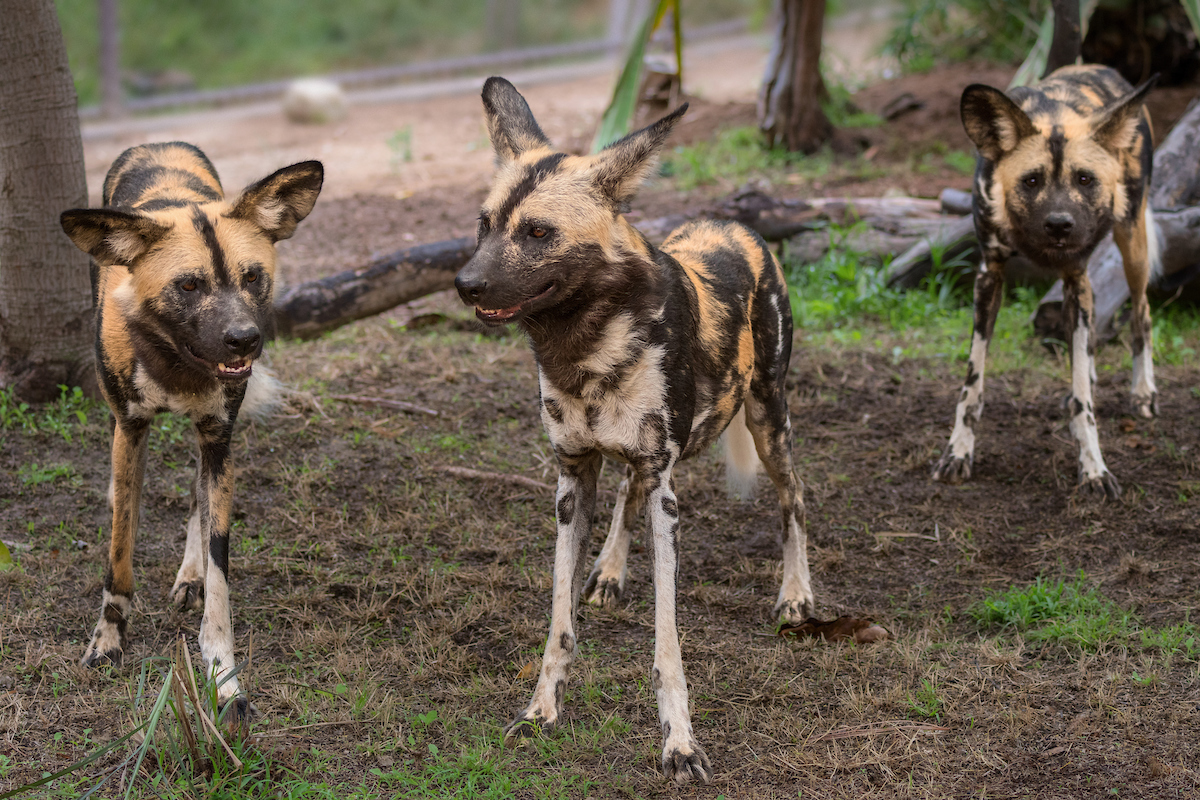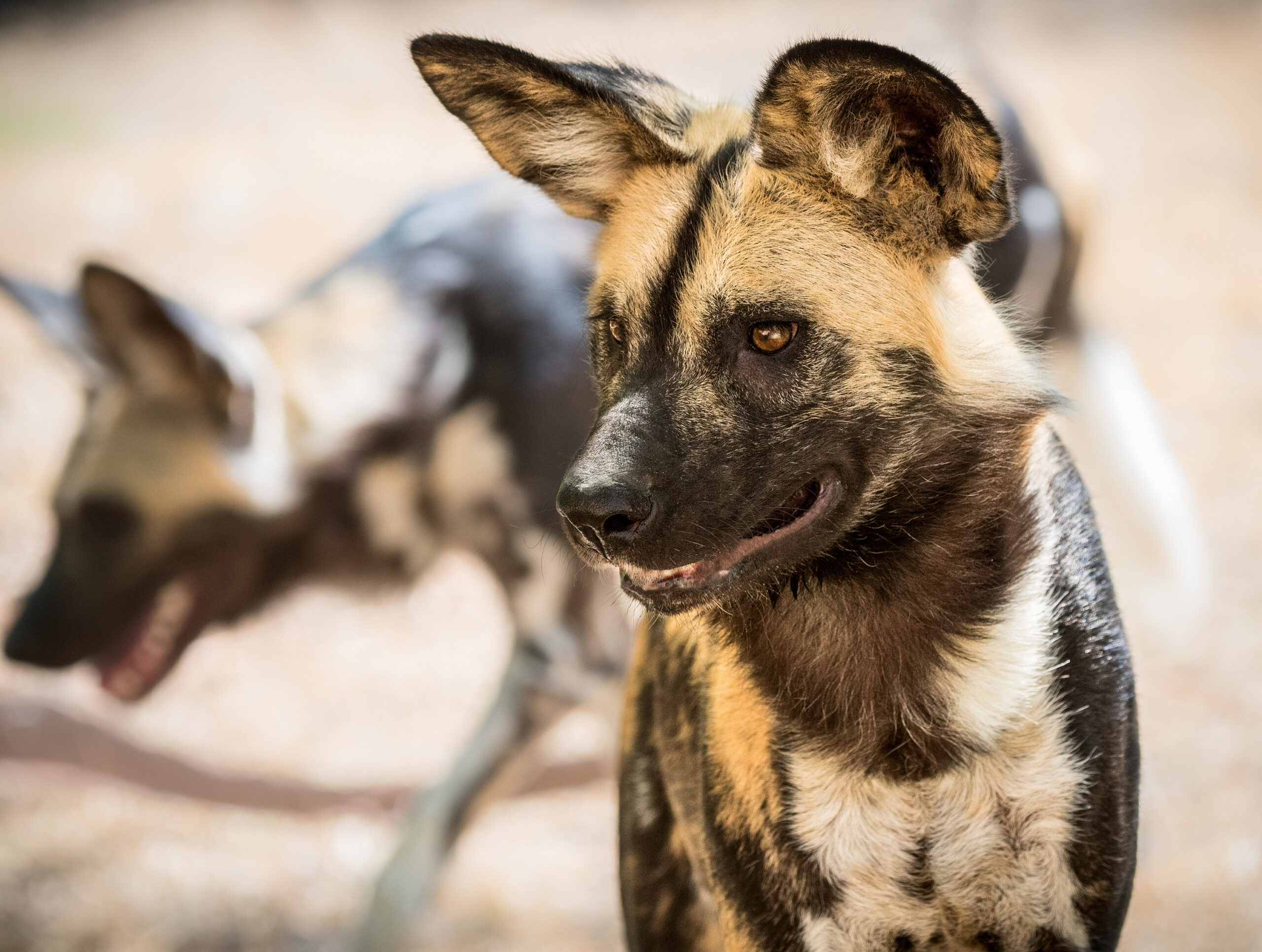About
Although their scientific name means “painted wolf,” these canids are neither wolves nor dogs but a unique species that has existed for over three million years as the only member of their genus.
African-painted dogs are highly social animals. An average pack consists of 6 to 12 members, including an alpha pair, related adults, and pups. Only the alpha pair breeds and reproduction is suppressed in the others, who fulfill the roles of nurse, babysitter, hunter, and sentry. They are the most adept hunters in Africa with a 70-90 percent success rate. Working as a team, these dogs are able to bring down prey much larger than themselves. Their long legs and streamlined bodies contribute to their speed and endurance. The top speed is about 44 mph, but they can maintain a speed of 35 mph for up to an hour. Packs are nomadic, often covering 20 miles in a day.
Aggression is rare among pack members, who engage in elaborate greeting ceremonies that occur several times a day and involve a range of vocalizations, including squeals, whines, and twitters. Every morning after emerging from the den, each individual greets every other member of the pack individually. They lick each other and play excitedly. Painted dogs are one of the few species that will look after their sick, injured, and elderly, including cleaning wounds and regurgitating food. Fewer than 5,000 African-painted dogs are estimated to remain in the wild, mostly in protected areas of Tanzania, South Africa, Botswana, and Zimbabwe. Isolated populations can be found in other areas of East and south Africa. Their decline is attributed to habitat loss and fragmentation, conflict with livestock and farmers, road accidents, and infectious disease.
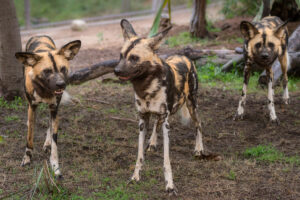
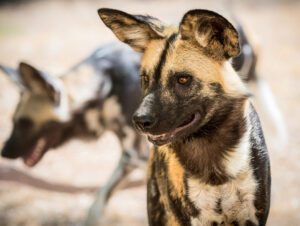
Status
African painted dogs are the second most endangered carnivore in Africa (after the Ethiopian wolf). There are fewer than 5,000 living in protected areas of Tanzania, South Africa, Botswana, and Zimbabwe. Isolated groups can be found in Zambia, Kenya, and Mozambique. Decline is attributed to habitat loss, poacher’s snares, shooting by ranchers, and vehicular traffic. Smaller populations are also threatened by disease such as rabies and distemper.
Habitat
Their habitat ranges from grassland to savannah, and lightly wooded forests of southern and eastern Africa.
Diet
This carnivore’s main prey is antelope, including impala, kudu, and duiker.
Physical Characteristics
Their tri-colored fur is a mottled black, brown, and yellow, which serves as an effective camouflage. The pattern is unique to each individual and may help pack members recognize each other. They stand 2.5 feet tall and weigh 40 to 70 pounds. Lifespan is about 8 years in the wild and up to 13 years in human care.
LOCATION WITHIN THE ZOO
You’ll find this animal in the “Animals of the Drylands” section. See Zoo Map.

